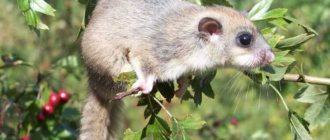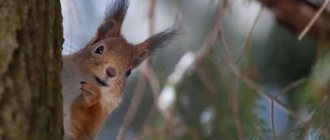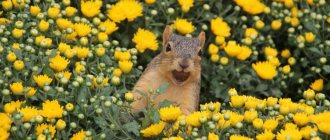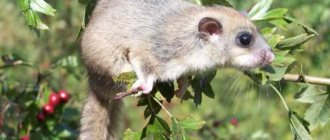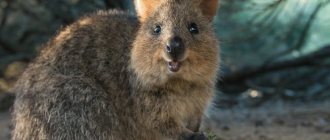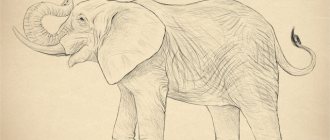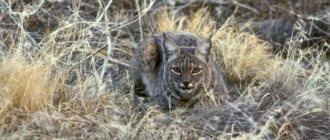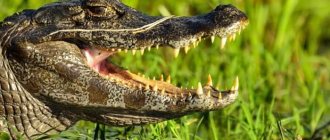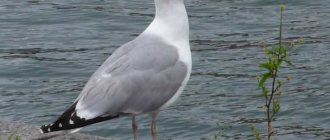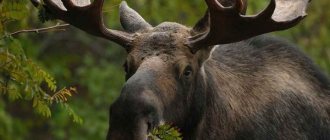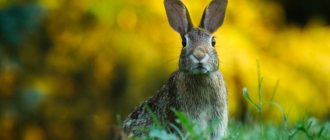- Wild animals
- >>
- Mammals
Forest dormouse are mammals from the order of rodents. These cute little animals are so small that adults easily fit in the palm of a person. The long fluffy tail that dormouse can boast of gives them a resemblance to a squirrel, and the contrasting color of the fur, ranging from yellowish-orange to grey, olive color, gives the animal an elegant look.
Origin of the species and description
Photo: Forest Dormouse
The dormouse family has 28 species and reaches 9 genera. In Europe, the distribution area is confined to the oak area. In Asia and Transcaucasia, the dormouse lives in forests of various types. The western border of the habitat is the northern slope of the Alps. In the region of Southern Europe, these animals are common on the Balkan Peninsula and partly in Greece. And on the Apennine Peninsula, animals live only in the Calabrian Mountains. While dormouse inhabits Eastern Europe almost completely, with the exception of northern Poland, and in Ukraine it cannot be found in the Crimea and the Black Sea regions.
Distributed throughout the territory of the Republic of Belarus. Small populations are found in Asia Minor, northern Pakistan, Iran, Turkmenistan, western China, and northern Afghanistan. The eastern border of the species’ habitat is the western slope of the Mongolian Altai.
On the territory of the Russian Federation, forest dormouse are found in the Pskov, Novgorod, and Tver regions, as well as in the north-west of the Kirov region and the south-west of the Volga region.
In the European part of Russia, the border of the range runs along the right bank of the Don River. Rodents are found in the North Caucasus from the Kuban River basin and further south, covering almost the entire Caucasus region. Found in the forests of Central Asia, Southern Altai, and Eastern Kazakhstan. The dormouse can climb up to 3000 m into the mountains, even reaching the rocky belt.
Dormouse family
All species in this family have a similar structure of bodies and organs. All dormouse are united by large dark eyes, rounded ears and long antennae. The fur of all animals is fluffy and soft. The tail is quite long and also covered with hair.
Dormouses mostly live in trees. If there are no large trees nearby, then dormouse can live in the branches of bushes. At the same time, there are species of dormouse that prefer to be on the ground most of the time.
Gardeners consider some varieties of these animals to be pests. The fact is that rodents can cause quite significant damage to gardens and berry fields. However, it is not so serious that farmers begin to consider dormouse as the enemy of man.
Three species of these animals live in Russia:
- Hazel dormouse.
- Sadovaya
- Forest and dormouse.
Appearance and features
Photo: Animal forest dormouse
Outwardly, these small animals can easily be confused with a squirrel or a vole mouse. The length of their body reaches 13 cm, while the tail is as much as 17 cm, and their weight is a maximum of 40 grams. The dormouse's muzzle is elongated and contains vibrissae - sensitive whiskers. With their help, animals sense their environment. The vibrissae are mobile; each bundle is responsible for a separate group of muscles. They often reach 20% of the entire body length of dormouse.
The eyes are relatively large, dark, shiny. The ears are medium sized, rounded. The hind limbs are noticeably larger relative to the forelimbs. They have 5 fingers, while the front ones have 4. The legs are thin and short. Females are usually smaller in size than males.
The fluffy, flattened tail not only serves as decoration for the animal, but also helps maintain balance when moving through the treetops. The skin of the tail is equipped with many blood vessels, which helps determine the mood of the dormouse. When the animal is calm, the fur is in a pressed position. But if the dormouse is angry or frightened, the tail shaft turns dark pink and the fur fluffs up, like a cat, to appear larger to its opponent.
Flexible fingers help the forest dormouse confidently climb trees and cling to thin branches. There are 6 large and convex calluses on the paws. The animal has a grayish color on top, with a black stripe running from nose to ear. The lower part is white or light yellow. The dormouse has 20 teeth in its mouth.
Dormouse animal of forests and fields
Tree-dwelling rodents also include very squirrel-like representatives of the dormice family (Myoxidae).
Sonya - regiment
The largest species of Central European dormouse is the common dormouse. The genus named after it (Myoxus) is characterized by a tail that is fluffy along its entire length and a color that is different on the upper side of the body than on the lower side.
Appearance of the regiment
The only representative of this genus in Europe, the common grasshopper (M. glis), has a body length of 16, a tail length of 13 centimeters and an ear, the length of which slightly exceeds one third of the head - on top it is ash-gray in color, sometimes with a brown coating, and on A dark brown stripe stretches along the ridge.
The underparts are white, the front legs are whitish-gray, the hind legs are whitish, the upper side of the tail is a pale brownish-gray color, and the lower side is barely lighter, and there is a dark brown ring around the eyes.
Habitat
Polchok is found in Central and Southern Europe, is absent in Denmark and Sweden, from Spain, Italy and Greece it is distributed north to Southern and Central Germany and Austria, and east to Southern Russia and Syria.
Description of the life activity of the regiment
The regiment spends the day sleeping, choosing for this purpose hollows, rock cracks and abandoned housing of other rodents. In the same places he builds his summer nest, never placing it openly in the branches. In the fall, the shelf becomes quite fatty and at this time of year the ancient Romans caught it for their table.
Its winter hibernation usually lasts seven months, and it rarely awakens from it before the second half of April.
In addition to nuts and berries, the chick eats fruits, small birds and other animals. Its enemies are wild cats, martens, white-tailed cats, ferrets, stoats and weasels.
Sonya
The genus Dormouse (Eliomys) differs from the dormouse in that its tail is covered in the main part with short and adjacent hair, but at the end it is long and fluffy, the ears are longer than those of the dormouse, but the coloring of the upper and lower sides of the body is also not the same.
Sony food
Dormouse garden is distinguished by its penchant for eating meat. She lays her cubs not only in hollow trees, but also builds a nest for them, placing it openly in the branches of a tree. Sometimes she uses an abandoned starling nest for this purpose.
Hazel Dormouse or Mustard
The genus Muscardinus, which includes three small species the size of a mouse, is distinguished by a tail covered with uniformly long hair, but shorter than that of the fly, and also by the fact that the color of the upper side of the body is the same color as the lower side.
Description
Its only Central European representative, the common flycatcher (M. avellanarius), reaches a body length of 7.5 centimeters and a tail of 7 cm.
The length of the ear is approximately half the length of the head. Above and below, the animal is colored red ocher-yellow, has a whitish throat and chest, light reddish eye circles and ears, a brownish-red upper side of the tail, and red legs with whitish toes.
The distribution of this species is limited to Europe, where it is found from Great Britain and Sweden in the west and north, to Hungary, Russia, Italy and Turkey in the east and south.
Nutrition and lifestyle
The hazel dormouse lives in bushes and hedgerows and feeds on hazelnuts, beech nuts, grain grains, rose hips and other plants.
https://youtube.com/watch?v=gHK9U4v8VHQ
When eating food, the flycatcher holds it in its front legs, which are almost as mobile as its arms.
In the art of climbing, the hazel dormouse is hardly inferior to the squirrel and is able to remove the grain of a nut without tearing it off. But this is a purely nocturnal animal that sleeps all day, curled up in a ball, in its nest or in the hollow of a tree.
The hazel dormouse usually builds its summer nest in the undergrowth of the forest, much less often in an open field under the protection of a tuft of grass; it weaves a spherical winter nest in the fall from thin twigs, leaves, moss and herbs.
Very often, the flycatcher makes several nests for itself, from two to ten and twelve, placing them close to each other in the same bush.
Having stored a small amount of food in the winter nest and been well fed with nuts and other oily grains, the hazel dormouse goes into hibernation.
On warm days, she wakes up, uses her food supply, but generally sleeps for 5-6 months, usually lying down already in October.
By the time the animal wakes up, it loses all its fat that it gained in the fall. In Germany, mostly in August, in England in the spring and then sometimes again in September, the flycatcher lays from 3 to 4 blind and naked cubs, placing them in a special nest, which is generally similar to the winter one, but is not located near the ground, but always at a height approximately one meter.
Where does the forest dormouse live?
Photo: What a forest dormouse looks like
The animal's main habitat requirement is broad-leaved forests with a layer of shrubs and dense undergrowth. Sometimes dormouse settle in gardens, mixed forests, forest edges, clearings, as well as bushes and mountains.
These rodents settle in hollows, do not disdain abandoned bird nests, and can also build their own. The animals use oak bark, moss, leaves and small branches as materials. They insulate their nests with wool and down. It takes dormouse 2-3 days to build a “house”. Sometimes they can drive its inhabitants out of a birdhouse and settle there themselves. Animals often settle in bushes because the thorns of the plants make their shelter inaccessible to many predators.
Dormouses preparing to become parents generously insulate their nests, filling them with fur at least halfway. Single individuals, on the contrary, build their houses carelessly, sometimes without even insulating them. Rodents usually spend no more than 3-4 days in such shelters, resting there during the day. Next, they are looking for a new home.
As a rule, such dwellings do not have an entrance. In constant anticipation of danger, forest dormouse can jump out of their shelter through any crack. In the area where one animal lives there can be up to 8 such houses. This is due not only to the desire to be safe, but also to the ability to leave the nest at any time if it becomes dirty or infested with parasites. In winter, dormouse dig holes about 30 cm deep, under roots or piles of brushwood, to avoid freezing on the surface, and hibernate for 5 months.
Characteristics of a rodent
There are several types of them, but they are divided into two groups - terrestrial and arboreal. The arboreal ones resemble small squirrels, while the terrestrial ones are more like mice. All species adapt well to life in captivity, but there is an important requirement - frequent cleaning of the cage is necessary. Although these animals are small, they quickly pollute the home, causing unpleasant odors.
Sonya regiment
Characteristics of the animal:
- The nut dormouse (tree dormouse) has an orange coat, while the dormouse (terrestrial) has a gray coat. That's right, squirrel and mouse;
- Body length - up to 20 cm. Tail is approximately the same length;
- Weight – no more than 100 grams;
- Ears are round;
- Lifestyle – nocturnal;
- Life expectancy is no more than 5 years, but more often no more than 3.
Tree dormouse jump very deftly and are able to fly along treetops up to 10 meters.
What does the forest dormouse eat?
Photo: Rodent forest dormouse
Since the dormouse is a nocturnal animal, during the day it sleeps in its shelter, and in the evening it goes in search of food. Their diet is varied. Dormouses are not picky when it comes to food.
Their diet includes:
- seeds and fruits of trees, plants, shrubs (hazel nuts, linden nuts, rose hips, strawberries, blackberries, raspberries, acorns, hawthorn fruits);
- southern dormouse manages to feast on apricots, apples, plums, grapes, pumpkin seeds, melon and watermelon;
- in early spring, dormice feed on buds and bark of willow, bird cherry, and aspen shoots;
- They do not disdain the seeds of berries containing hydrocyanic acid.
Although the animals prefer plant foods, if on their way they encounter a bird’s nest with newborn chicks or eggs, the dormouse will definitely feast on them. They also eat various insects, their larvae and worms, as well as snails and mollusks.
Thanks to their acute hearing, dormouse can detect the quietest sounds of insect movement. Having frozen for a moment to accurately determine the source of the sound, the animal easily finds and catches prey. Small lizards or other rodents can be an excellent meal for these animals.
Depending on the area where the animals live, their diet may be dominated by both plant and animal foods. Dormouses, as a rule, do not stock up on food for the winter, but sometimes they can stock up in hollows.
Feeding
The forest dormouse is omnivorous. This is exactly the case when the expression “appearances are deceiving” would be appropriate: a cute fluffy animal is a predator whose diet includes not only food of plant origin.
In nature, this small rodent deftly hunts insects (adults and larvae), destroys nests of birds, and, on occasion, will not refuse a chick or a mouse.
Therefore, the presence of animal food in the diet is a prerequisite. This could be a raw egg, meat, a large cockroach, mealworms, or insect pupae.
Forest dormice, which receive only plant food, lose activity after a week, and females can even eat their cubs.
Any plant food is suitable - it all depends on the individual preferences of the animal.
Fruits (apples, pears, grapes), berries (raspberries, strawberries, strawberries, etc.), nuts (walnuts, pine nuts, peanuts, hazel - pre-chopped), seeds (including melons, pumpkins, watermelons), acorns , fruit seeds. It has been noticed that dormice living in captivity prefer the same seasonal food as their free counterparts.
For example, in the spring, when animals come out of hibernation, what can the forest dormouse eat? Perhaps buds and bark - also a dormouse living in a house and having any food to choose from will prefer buds and bark in the spring.
Among products not available in nature, domestic dormouse happily eat honey, sugar, jam, cookies, white bread soaked in milk, and sweet natural juice.
But no matter how much animals love such products, there should be a minimum amount of them in the diet.
Regardless of the availability of succulent food, there should always be fresh water in the cage. It gets dirty quickly, so you need to change the water daily.
Features of character and lifestyle
Photo: Forest Dormouse
Although forests and shrubs are considered the dormouse’s favorite places to live, it can also be found in a park area or garden. Some animals choose an arboreal-terrestrial lifestyle, others only a terrestrial one. The former spend most of their lives in trees. Usually the dormouse is active only at night, but during the rutting period the animal can be found during the day. They usually lead a bachelor lifestyle and live in families only during the breeding season.
With the onset of severe cold, dormice hibernate. At this point, they accumulate a large amount of subcutaneous fat, and therefore they can become twice as heavy by winter. Body temperature in a sleeping state decreases significantly. If in the summer in the active state it reaches 38 C, then during hibernation it is 4-5 C, or even less.
If by the time they wake up they are still in the cold, then the animal can return to the hole and sleep some more. Immediately after hibernation, the breeding season begins and dormice look for partners. Sonya is very clean. They can spend many hours combing their fur, carefully going through every fiber on their tail. In the wild they can live up to 6 years. They can only be tamed if they are caught as young. Dormouses do not like to be handled with bare hands.
Description of the hazel dormouse
The Mushtrap does not belong to hamsters, squirrels, or mice, which it resembles in appearance, although it is also a rodent. The dormouse family includes animals of different sizes, of which the hazel dormouse is the smallest.
Appearance
This tiny rodent weighs no more than 27 grams as an adult (slightly larger than the average size of a regular mouse). This is the maximum weight before hibernation. Only a dormouse, awakened and thin over the winter, weighs only about 15-17 g.
The body of the musky trap is only about 7-9 cm long, not counting the tail, which adds another 6-7 cm. The animal is covered with soft short fur. The coat color is terracotta-red on the back, head and tail, yellowish or whitish on the belly and the inner surface of the paws. The tip of the tail is brown or, conversely, white. Light spots can decorate the chest and abdomen of the animal.
The dormouse's skeleton is capable of shrinking vertically - this allows the animal to curl up into a small ball, take up very little space and squeeze into narrow crevices. The paws are relatively long, flexible, tenacious mobile fingers are clearly visible, also light in color. 4 fingers have the same length, and the fifth, spaced perpendicularly, is slightly smaller.
Sonya has a rounded muzzle with a small pink nose, around which grow very large whiskers, almost half the length of the body. The ears are small, slightly flattened and rounded, they move like locators, each ear separately. The eyes are round, slightly convex, large, shiny black. It has very sharp incisors for gnawing through hard nut shells, but practically does not use them for biting.
Hazel dormouse lifestyle
The animal is named dormouse partly because it spends most of the day in hibernation, being active only at night. Dormouses also sleep in winter (from October to April) in underground burrows. Thus, more than half of the flycatcher's life is spent sleeping.
At night, dormice crawl out of their shelters and look for food, climbing branches of bushes, in which their light weight and strong flexible legs help them a lot. They jump from branch to branch like miniature squirrels.
They are trusting and friendly creatures that are easy to tame and can be easily kept at home, like hamsters. These animals were especially popular in Victorian England; in books there are often references to children caring for them. Today there are clubs for dormouse lovers; enthusiasts - those who are not deterred by the nocturnal lifestyle of these animals - are breeding new hybrid breeds.
Hazel dormouse nests
The animals make comfortable nests for sleeping, which are insulated with moss, wood shavings, leaves, and feathers. The place for a dormouse's "day" can be:
- hollow;
- hole under the roots;
- a hole under an old stump;
- a nest made independently from grass, suspended at a height of 1-2 m;
- a bird's nest, empty or one from which a rodent has evicted its rightful owners.
If the sleepyhead was unable to find or make a home for itself from natural materials, it is not averse to taking advantage of the fruits of human hands: curling up in an old tin can or an abandoned car tire. They can take over an empty birdhouse or live in the attic. One dormouse can have several places to spend its days at once. For hibernation, dormice build a special wintering nest - underground or between the roots of trees. They try to insulate it as much as possible and close the entrance.
To breed offspring, females build a spacious maternity nest, trying to place it at some height from the ground. It is two-layer: the outer shell is made of foliage, and the inner “capsule” is made of the softest materials available to the dormouse - feathers, down, chopped grass.
Lifespan
In the wild, dormice do not live long, 2-3 years. They can live longer as a pet, up to 7-8 years. The reason for the short life in the wild is not danger at all, but mainly temperature fluctuations and environmental troubles. Many animals freeze during hibernation (up to 70% according to data from the Moscow region).
Return to content
Social structure and reproduction
Photo: Animal forest dormouse
Dormice of different sexes stay together for a very short period of life. In the spring they begin mating games. Males wake up from hibernation earlier than females and begin to mark trees. They eat intensely to regain strength after a long sleep. After about a week, the females also emerge from their burrows. At night they make loud whistles, “singing” sounds and leave their marks near the marks of males.
During the breeding season they live in pairs in the same nest. But just before giving birth, the female forcibly expels the male. Her pregnancy lasts about 28 days. After their completion, up to 8 cubs are born. Basically, the offspring is 1 time per year. On the eve of childbirth, the female becomes especially economical and constantly repairs and insulates the shelter. With a large amount of food, dormice can even live in families in one nest.
Little dormouse are born naked and blind and weigh about 2 g in the first day. A caring mother is always with the offspring, feeds and warms the children, going out briefly to feed and closing the nesting hole. If one of the babies is missing, the mother finds him by squeaking and brings him back.
At the age of 2 weeks, the cubs' eyes fully open and soon they will be able to independently climb tree branches and find food for themselves. At the age of 45 days they become independent and leave the nest.
Development of offspring
During the neonatal period, the pups are completely helpless; at this stage of development they completely lack vision and hearing.
The hearing aid begins to function first, fully capable of perceiving sound frequencies already on the 12th day after birth. The string to see comes after three weeks. Newborn babies feed on breast milk to the point of insanity; food consumed by adults begins to be given to babies of two weeks of age and in crushed form.
Full mastery of the adult diet and the transition to it occurs around the fourth week after birth. After a month and a half, the small animals find themselves directly in the nest, they express a desire to go out and independently, without resorting to the help of adult relatives, lure out food for themselves.
Animals acquire the ability to produce offspring no earlier than at the 11th month of life.
The total lifespan of a rodent is unimportant (= unimportant) more than 4 years. Long-lived bats are found exclusively in captivity.
Natural enemies of the forest dormouse
Photo: What a forest dormouse looks like
The main enemy of these rodents is the gray owl, a medium-sized owl. Its body length reaches 38 cm and weight up to 600 g. Its wingspan reaches 1 m, and its color can range from gray to reddish or dark brown.
The whole body is covered with dark and light spots. The eyes are black. This species of owl lives in mixed types, deciduous and coniferous forests, parks and gardens. It nests most often in hollows, in which it lives for many years, resting in them even in winter. Can settle in old nests of predators and natural niches. Like the forest dormouse, the tawny owl lives in the same places and is awake only after sunset.
Notes
- ↑ Sokolov V. E.
Five-language dictionary of animal names. Mammals. Latin, Russian, English, German, French. / under the general editorship of academician. V. E. Sokolova. - M.: Rus. lang., 1984. - P. 190. - 352 p. — 10,000 copies. - ↑ 1 2 Airapetyants A. E.
Soni. - L.: Leningrad State University, 1983. - 192 p. — (Life of our animals and birds, issue 5). - ↑ Rossolimo O. L., Potapova E. G., Pavlinov I. Ya., Kruskop S. V., Voltsit O. V.
Dormouse
Dryomys nitedula
(Pallas, 1779) // Dormouse (Myoxidae) of the world fauna. - M.: MSU, 2001. - P. 161-186. — 229 p.
Population and species status
Photo: Rodent forest dormouse
Within its distribution area, the stock of forest dormouse in the territory of the former USSR is distributed unevenly. In the European part, in the zone of mixed deciduous forests (Belovezhye, Russian and Belarusian reserves, forest-steppe Ukraine), its abundance is common, but in general it is small.
In the northeast (Pskov, Tver, Volga region, Baltic states) this species of dormouse is becoming less and less common. In these areas, the forest dormouse is listed in the Red Book and requires some attention as a vulnerable and rare endangered species. Over the past 20 years of observation of the species by the VSU biocenter, it was revealed that in 9,800 trap-nights only 1 forest dormouse and several hazel dormouse were caught. At the same time, when examining the titmouse, 8 adult individuals and 2 broods of 6 young animals were found.
There is no concern about the number of these animals in the mountainous regions - the Carpathians, the Caucasus, Transcaucasia, Kodri, Kopet-Dag, Central Asia. Forest animals, dormouse, are not against human proximity. They willingly settle in orchards, vineyards, and walnut groves. In Moldova, there are especially many dormouse due to forest belts of wild apricot, white acacia, and caragana plantings. From which we can conclude that the forest dormouse requires special protection and protection in the CIS countries in the northeastern part of its habitats.
Keeping a dormouse at home
Cell
The best options for maintaining a house are dwarf, hazel, garden, forest and shelf:
- Due to their small size, dwarf and hazel can live quietly in a cage.
- For a shelf, both a cage and an aviary will be optimal.
- Garden and forest animals must be kept exclusively in an enclosure.
You must choose an iron cage with thick bars so that your pet does not escape. Metal ones are much more practical to use, unlike wooden and plastic ones, which over time will become saturated with an unpleasant odor, and the rodent will also deal with them in no time and escape into the wild. The retractable tray makes it easy to clean and tidy up. Sawdust, small wood shavings and dry sand are the best options for bedding.
Considering that these animals are very active, it is better to choose a cage that is spacious enough. It must be supplemented with a heavy bowl of food so that the animal does not turn it over, as well as an automatic drinking bowl. A variety of ladders, pipes, ropes and wheels are suitable for entertainment. You can also attach an additional house to the cage, in which the dormouse will set up a nest.
REFERENCE! Hay, straw, and clean paper divided into strips are suitable for filling.
The habitat must be washed regularly:
- bowls and sippy cup - daily;
- replace bedding - twice a week;
- disinfection - once every 2-3 months.
You can disinfect the cage with boiling water.
It is necessary to place the dormouse in places not subject to temperature fluctuations. It is also better to protect the rodent from direct sunlight and place the cage away from the battery.
Nutrition
Dormouses feed mainly on solid food. The diet mainly consists of sunflower seeds, melon and pumpkin, they also love pine nuts and walnuts. Rodents can sometimes be offered apples, grapes, branch bark, rose hips, and dried rowan. Forest, garden and dwarf species require food of animal origin, namely insects. They love mealworms, butterfly pupae, cockroaches, and bugs. Some owners note the love of these dormice for boiled eggs.
REFERENCE! Vitamins or fish oil can be offered as a supplement to the daily diet.
Given the characteristics of dormouse in eating a lot and often, owners of rodents need to monitor the volume of portions and frequency of feeding the animals, as they are prone to obesity. Excess weight poses a threat to the life of a small animal.
Reproduction
Immediately after hibernation, mating season begins for mature dormouse.
Dormouses reach sexual maturity at 1 month, so by providing comfortable conditions for the animal, you can watch the rodent reproduce. As a rule, this happens no more than twice a year. If the mating of the dormouse is successful, then within a month (that’s how long pregnancy lasts) you can see new offspring.
Dormice are born mainly at night in numbers from 2 to 10 cubs. They are blind, hairless and completely dependent on their mother, because they feed exclusively on her milk. Do not rush to separate parents and cubs - these rodents prefer collective education. Separation can even lead to the death of pets. But as soon as they get stronger, you can think about giving away the animals, because at 1 month they, as previously mentioned, are sexually mature, can bring new offspring.
Diseases
Compliance with the basic rules of care and maintenance is the key to a long and healthy life for the animal. The owners of these pets note that the rodents are in good health. Therefore, as soon as you notice changes in behavior, refusal to eat, lethargy, then this is a reason to contact a veterinarian.
Diseases can be divided into 2 groups:
- Non-communicable diseases . Animals are susceptible to allergic reactions, diarrhea, and obesity.
- Infectious diseases . Only a veterinarian can determine their presence. They are caused by a virus, microorganisms and parasites. The most complex options include skin lesions, colibacillosis, salmonellosis, brucellosis, and listeriosis.
Features of home maintenance
Keeping a dormouse at home is generally not difficult, but this animal, which is so similar to a squirrel, requires a certain level of comfort.
The necessary conditions
A spacious cage, or even better, an aviary, is suitable for keeping this animal. If the size of the enclosure allows, then you can create elements of a natural landscape in it: line the bottom with moss, place thick branches inside, or even plant fruit bushes in pots. It is necessary to take care in advance about the conditions for hibernation of the animal - put a path in the form of a piece of pipe into the prepared hole.
Important! The cage or enclosure where the animals are kept must be cleaned daily. Disinfection must be carried out periodically. Without these procedures, animals may get sick, and the cage will become a source of unpleasant odor.
Requirements for the cage and its placement
The minimum dimensions of a cage suitable for keeping a dormouse are 50x30x30 cm. It must be made entirely of metal, otherwise a rodent will easily damage it. The best cage shape is rectangular, which is easier to clean. The cage needs to be equipped with an automatic drinking bowl, a feeding trough, and it is advisable to install a running wheel. Sawdust can be used as a filler. When placing a cage with these rodents, it should be taken into account that they are very active at night and the noise they make can interfere with people's sleep. In addition, the cage should be in a place well lit by daylight, but should not be exposed to direct sunlight. Electrical devices and heating devices should not be placed nearby.
Feeding your pet
The basis of the diet of domestic dormice is plant foods. These are various fruits, nuts, cereals, grains. Animal food should be given periodically: eggs, cottage cheese, boiled meat, insects. Among insects, animals prefer mealworms. Animals eat often and in large quantities, this can even lead to unwanted obesity. However, on the eve of hibernation, extra fat will not hurt the animals.
Find out how to teach your parrot to talk and sing.
Caring for dormice is not difficult; you just need to clean the cage every day and feed and water the animals on time. The animals are in good health, but they can also get sick. Signs of the disease are the animal’s refusal to eat, unkempt fur, and apathy. In this case, you need to show your pet to a veterinarian.
